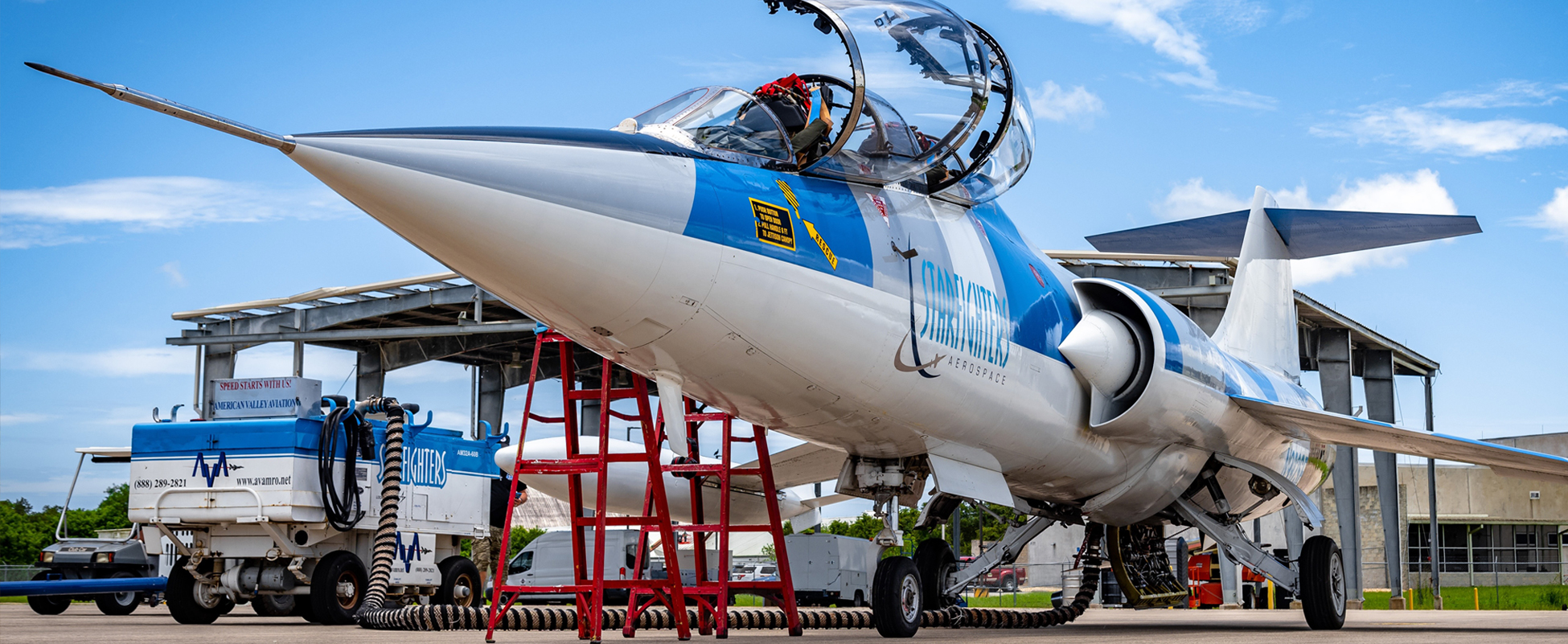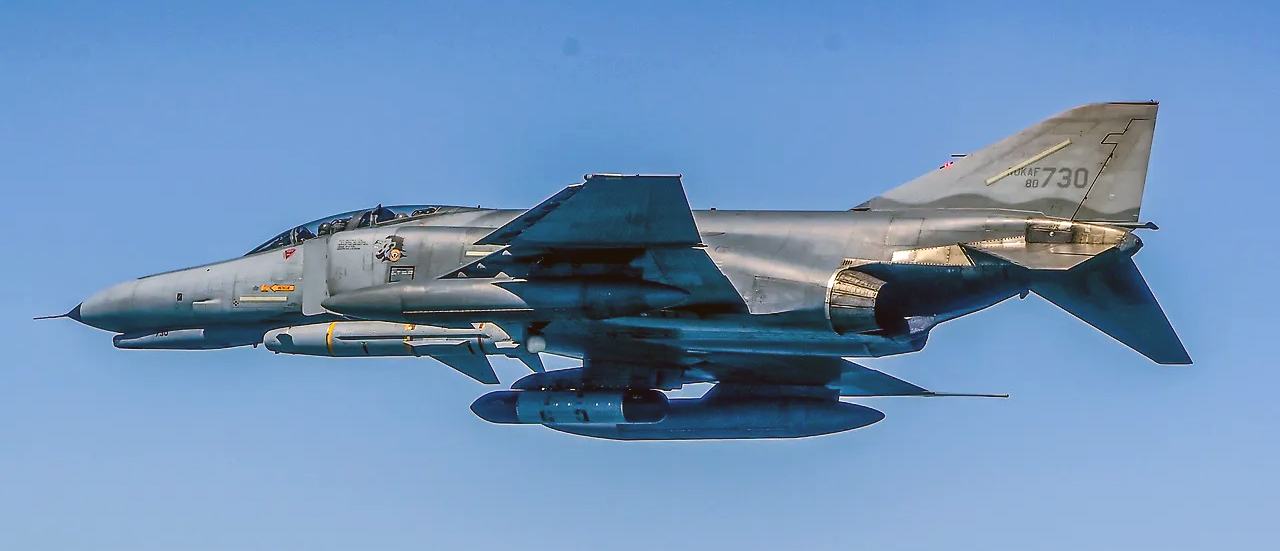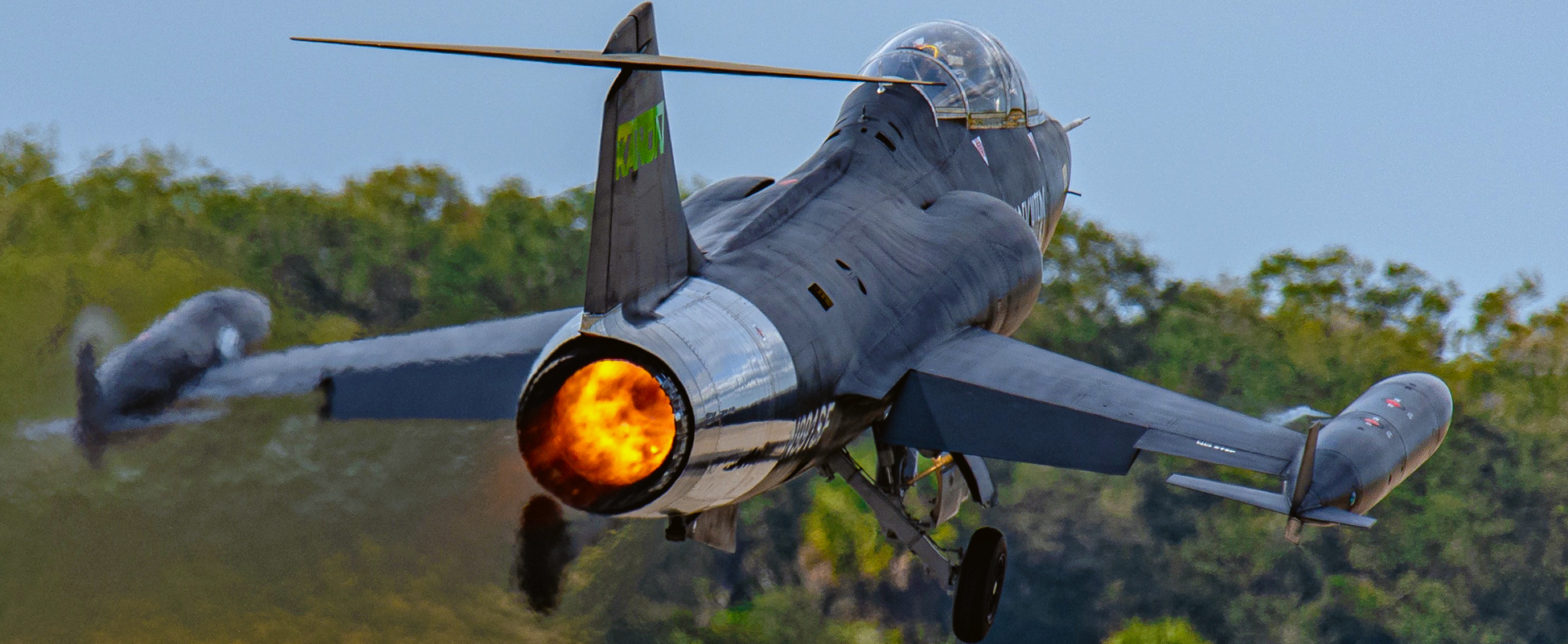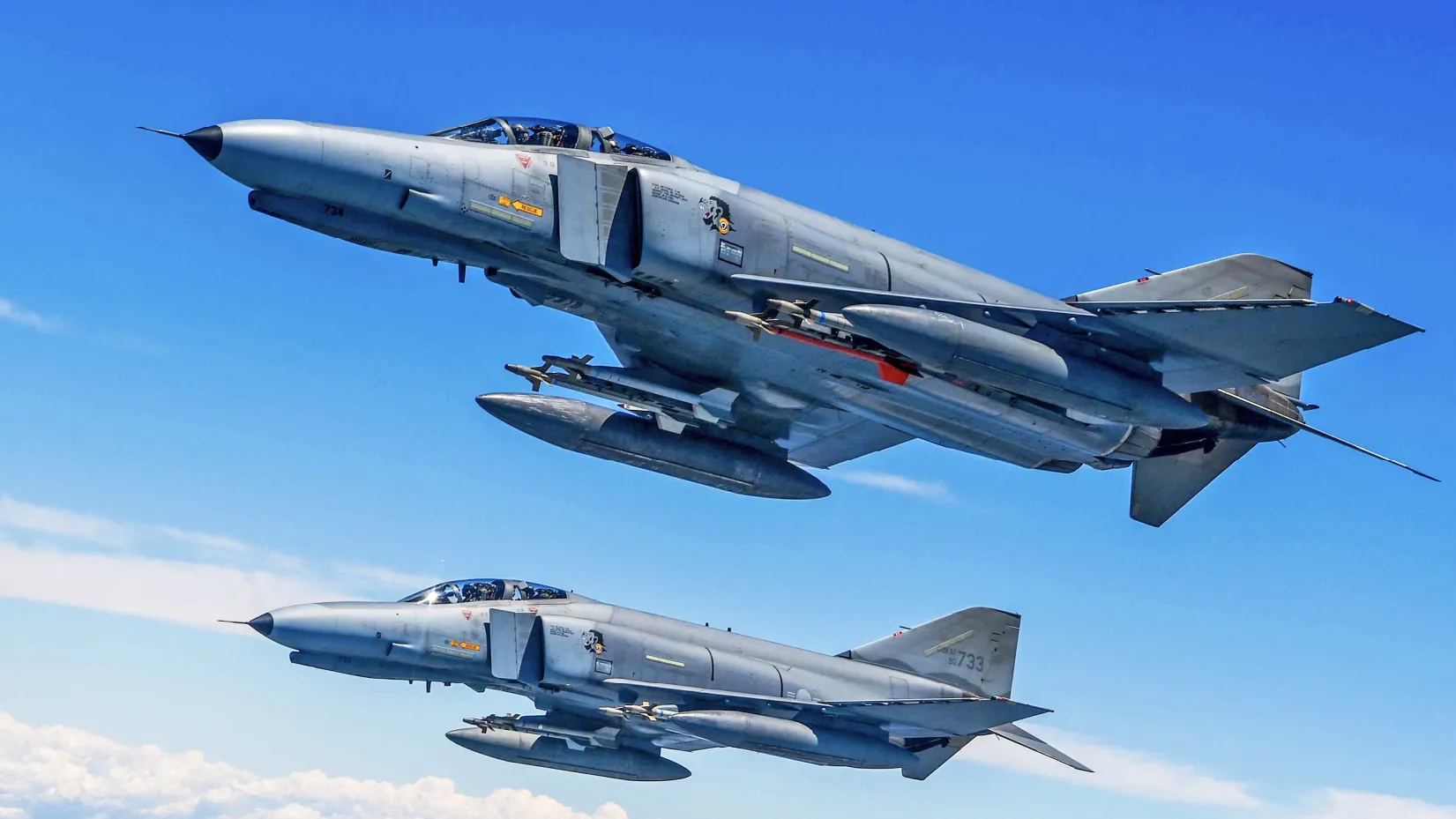The Kennedy Space Center-based research, test, and now space launch company Starfighters International, which has been flying F-104 Starfighters privately for decades is now, is in the process of acquiring a dozen F-4 Phantoms. The deal would see the iconic third-generation Cold War fighters fly primarily in service of the firm’s space launch operations, which aim to provide rapid and flexible access to low Earth orbit (LEO) for small satellites, as well as suborbital offerings.
Starfighters International began as a company around three decades ago, and grew from doing air shows to becoming largely a research and development support firm with a very unique address. The company and its fleet of antique Mach 2-capable F-104 Starfighters, which includes seven airframes today, moved into Kennedy Space Center in 2007. There they would have access to arguably one of the most famous and largest runways on earth, the Shuttle Landing Facility. Now they are in the process of building a 150,000-square-foot facility in Midland, Texas, to support the firm’s more ambitious space launch aims.
And this is precisely where the F-4 Phantoms come into play.
While the Lockheed F-104 Starfighter is capable of zooming up into the stratosphere at high speed, they cannot carry heavier, outsized launch vehicles at the required performance that will allow larger payloads to be inserted into low Earth orbit. The F-4s — at least in concept — can.

In an April 2025 SEC filing, the firm, which is undergoing a major fundraising drive, stated that it is in the process of acquiring a dozen F-4s, all from South Korean stocks. Additional support aircraft — a DC-9 and MD-80 — are also being perused. The filing reads, in part:
“On October 31, 2024, our wholly owned subsidiary, Starfighters International entered into an aircraft acquisition agreement (the “Aircraft Agreement”) with Aerovision LLC, a Florida limited liability company (“Aerovision”), pursuant to which Starfighters International agreed to purchase from Aerovision various used aircraft and associated spare equipment (the “Aircraft Transactions”) in phases. The Aircraft Agreement contemplates that each Aircraft Transaction will be completed pursuant to a definitive agreement (each, a “Definitive Agreement”) to be settled between the parties, in each case with a corresponding bill of sale and associated closing documents. The Aircraft Agreement provides that it, and any Definitive Agreement entered into by the parties, may be amended and/or extended in writing by the parties on a case-by-case basis.
The subject aircraft for acquisition pursuant to the Aircraft Agreement are: (i) twelve F-4 Phantom II aircraft, (ii) one MD-83 with U.S. Federal Aviation Administration (“FAA”) Registration N572AA, and (iii) one DC-9 with FAA Registration N932NA. The subject aircraft are used-serviceable surplus aircraft offered on an “as-is-where-is” basis, with no warranty express or implied. The twelve F-4 Phantom II aircraft have recently been decommissioned by the Republic of Korea Air Force, and will have to be registered with the FAA after they are imported into the United States from South Korea.
The Aircraft Agreement requires an initial deposit advance in the amount of $5,000,000.00 to be made no later than ten business days from the signing of the Aircraft Agreement, which has been paid from funds received from the Company’s Regulation A Tier 2 Offering. The payment of the deposit is considered to constitute “Phase 1” under the Aircraft Agreement.
Phase 2 will involve the payment of an additional $5,000,000.00 for the acquisition of eight of the twelve F-4 Phantom II aircraft. Such payment is due no later than December 15, 2024.
Phase 3 will involve the payment of an additional $5,000,000.00 for the acquisition of the final four F-4 Phantom II aircraft. Such payment is due no later than March 15, 2025.
Phase 4 shall involve the payment of an additional $5,000,000.00 for the acquisition of the MD-83 aircraft with FAA Registration N572AA, and the DC-9 aircraft with FAA Registration N932NA. The parties are to use their reasonable best efforts to complete Phase 4 by April 15, 2025.“
It’s worth noting that South Korea retired its last upgraded F-4E Phantoms a year ago, which you can read all about in this past feature.

There are currently no F-4s registered to Starfighters International in the FAA database. Importing fighters, especially ones as capable as the Phantom, is a complex, very expensive process, and tightly controlled in various ways, including through U.S. International Traffic in Arms Regulations (ITAR).
If the deal is moving forward as planned, delays would not be surprising. Beyond financing, when dealing with the transfer of capable and deadly military hardware from one country to another, and especially from government to private hands, other factors can emerge virtually from nowhere. Case in point, from the same SEC filing:
“As a result of the current political situation in South Korea, Starfighters International has been unable to view the F-4 Phantom II aircraft originally contemplated under the Aircraft Agreement to be acquired from the Republic of South Korea Air Force, and neither Starfighters International nor Aerovision have been able to confirm the continued availability of such aircraft. As such, Starfighters International did not pay the Phase 1 initial deposit advance nor the Phase 2 payment provided for under the Aircraft Agreement. On or about January 28, 2025, Starfighters International and Aerovision verbally agreed to amend the Aircraft Agreement regarding the Aircraft Transactions, pursuant to which:
(i) Starfighters International may elect not to proceed with Phase 3 and/or Phase 4;
(ii) The initial deposit advance of $5,000,000.00 is broken down into two payments of $2,500,000.00 each, with the first payment to be made on or before January 31, 2025 (which was paid on January 24, 2025), and the second payment to be made within 10 days of Aerovision executing a binding agreement to acquire a minimum of eight F-4 Phantom II aircraft from an alternative supplier(s);
(iii) The due date for payment associated with Phase 2 is amended to be within five days of Aerovision providing confirmation of shipping of the F-4 Phantom II aircraft to the Company from the point of origin;
(iv) The due date for payment associated with Phase 3, if Starfighters International elected to proceed, is amended to be October 31, 2025;
(v) The due date for payment associated with Phase 4, if Starfighters International elected to proceed, is amended to be January 31, 2026.“

While the filing does not elaborate on the “current political situation in South Korea” at issue, the country is still dealing with the aftermath of former President Yoon Suk Yeol’s declaration of martial law on December 3, 2024. Yoon, who was subsequently impeached and removed from office, is now on trial after having been charged with leading an insurrection. South Korea’s relations with North Korea are also far from the best they have been.
If sourcing becomes a primary issue, F-4s should be available from other friendly countries. Greece is winding down its Phantom operations and Turkey will eventually send the last of its F-4s out to pasture. Others have retired the type in recent years, such as Japan.
We asked Starfighters International about the status of the F-4 acquisition. They couldn’t provide additional info, stating:
“We are very excited for the future prospects of the company, but we cannot comment on the F-4s at this time.”
While companies have come and gone trying to break into the space access game using fixed-wing aircraft as launch platforms before Starfighters International, the timing is arguably quite good for the company.

The space access marketplace has exploded in recent years, as has the financial investment in it. In particular, the ability to put smaller payloads into orbit much faster and more flexibly is a market area that has great interest. Right now, putting a satellite into orbit weighing hundreds, not thousands of pounds, is in many cases tied to the schedules of larger space-launch payloads and the elaborate systems that put them into orbit. In other words, these smaller satellites often have to hitch rides atop rockets alongside larger ones.
This means customers are married to someone else’s timeline, which can be years in length. Considering the primary payload is paying most of the bill, delays in that more complex payload can push back launches. Again, this is all outside of the smaller customer’s control. Then there is just the desire for flexibility — being able to quickly launch as needed and from where it is most advantageous to the required orbit. This is not a thing for traditional space launch services.
Having cost-effective and highly adaptable launch options for these smaller customers also fits into NASA’s aim at commercializing LEO and expanding access to it. Above all else, the U.S. military is seeking this level of flexibility across its payload classes as space becomes more contested and the technological evolution of payloads is outpacing launch schedules.

Payloads are also shrinking as technology rapidly evolves, meaning more capable smaller satellites will only increase in number, and rapidly so. This is especially true as satellite constellations proliferate.
Still, as noted earlier, the concept of space launch using fixed-wing mothership/launch aircraft as a first ‘stage’ has been littered with broken dreams and unrealized concepts. On the other hand, Starfighters International has been around for a long time and has survived providing test, training, and other support products to key industry players. They also already have a long operational record of flying very high-performance military fighter aircraft and clearly have deep roots in the spaceflight community.
As it sits now, the firm sees its F-104s providing suborbital payload launches, which offer minutes of microgravity, to customers who need to experiment in that environment. This will be via their Starlaunch 1 rocket. The Starlaunch 2 rocket, which the F-4 will presumably carry, will provide LEO access, or at least heavier LEO access than what the Starfighter can provide. A single rocket can carry one payload or over a dozen smaller ones.

Finally, there could also be a hypersonic testing angle that may have potential with a larger and more powerful aircraft like the F-4 as a launch platform. Most famously, Stratolaunch pivoted away from a space launch business model to one focused on supporting hypersonic testing. Of course, this example is on the other end of the spectrum when it comes to mothership size and capabilities, but smaller hypersonic vehicles will also be needed for test and evaluation efforts as the military’s demand for these weapons increases.
If Starfighters International can pull off its F-4 acquisition, these aircraft would join just one flight-worthy Phantom in the United States, an F-4D that belongs to the Collins Foundation. We reached out to the nonprofit as to the status of their Phantom. They told us it is in flyable condition, but it has not flown for a number of years due to the cost associated with operating it.

This underlines just how expensive it is to fly anything like an F-4. The F-104s feature one J79 turbojet, while the F-4s have two. The fuel burn alone is a daunting expense — one of many that Starfighters International will have to confront to keep the F-4s flying and their pilots current. Still, today there are more advanced fighter aircraft than the F-4 flying in private hands in the United States, and successfully for business purposes.

Regardless, if the South Korean jets make it to the United States and into the skies, they will be the only actively flying F-4s in the country.
Hopefully, the company can share more about its potential as an F-4 Phantom operator in the near future.
Contact the author: Tyler@twz.com
